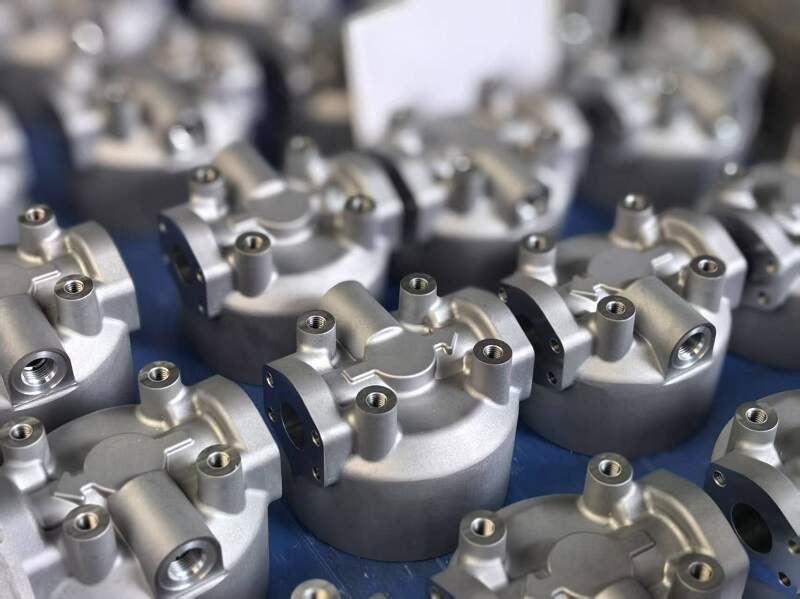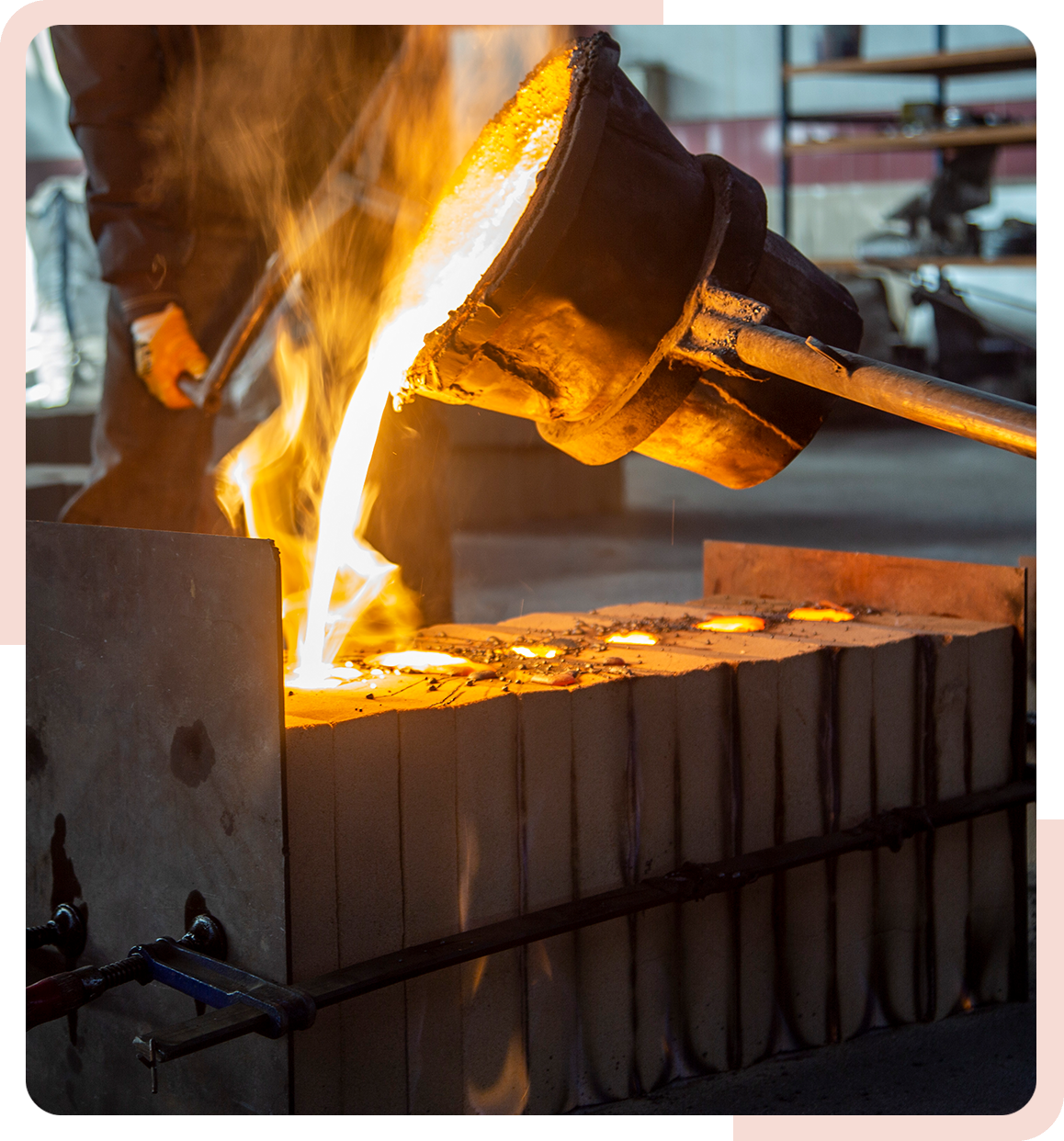Comprehending Aluminum Casting: A Comprehensive Guide to Its Applications and benefits
Aluminum casting is a procedure that changes liquified aluminum right into strong kinds with different techniques. This method offers remarkable advantages, such as light-weight stamina and deterioration resistance. It discovers applications in countless markets, reflecting its versatility. Recognizing the ins and outs of aluminum casting and its finest techniques can significantly influence the top quality of the last item. Discovering these aspects reveals truth capacity of aluminum casting in contemporary production.
The Basics of Aluminum Casting
Aluminum casting is a manufacturing process that changes molten aluminum right into strong objects with numerous strategies. This procedure starts with home heating aluminum until it reaches its melting factor, enabling it to move right into molds. There are numerous methods of aluminum casting, consisting of sand casting, die casting, and investment casting, each appropriate for various applications based on design complexity and manufacturing quantity.
In sand casting, molds are formed using sand, offering adaptability for intricate forms. Pass away casting includes forcing liquified aluminum into a steel mold and mildew under high stress, resulting in specific and repeatable parts. Financial investment casting, on the other hand, utilizes a wax pattern that is covered with ceramic to produce detailed parts.
After the aluminum strengthens and cools down, the molds are gotten rid of, exposing the ended up items. This casting process is integral in numerous markets, including auto, aerospace, and customer goods, enabling the development of light-weight and long lasting parts.
Advantages of Aluminum Casting
One of the vital advantages of aluminum casting depends on its capacity to generate light-weight yet strong parts. This one-of-a-kind combination makes aluminum an excellent choice for different industries, consisting of automotive, aerospace, and durable goods. The inherent corrosion resistance of aluminum additionally enhances the durability of the cast parts, extending their life-span and decreasing the need for upkeep.
Furthermore, aluminum casting permits intricate geometries and elaborate designs, which can result in much more reliable and visually pleasing products. The product's exceptional thermal and electric conductivity further broadens its applications, specifically in electronics and heat exchangers.
Aluminum recycling is extremely effective, adding to environmental sustainability and reducing production expenses. On the whole, the benefits of aluminum casting position it as a flexible and sensible remedy for suppliers seeking to enhance performance while minimizing weight and resource usage.
Usual Techniques of Aluminum Casting
While various techniques exist for aluminum casting, each technique uses distinct benefits tailored to certain applications. The most common techniques include sand casting, die casting, and investment casting.
Sand casting, recognized for its flexibility, utilizes sand molds to create complex shapes and appropriates for both large and little manufacturing runs. Die casting, on the other hand, utilizes high-pressure injection of liquified aluminum into steel molds, resulting in specific dimensions and smooth surfaces, making it ideal for automation.
Investment casting, commonly described as lost-wax casting, includes creating a wax pattern covered with a ceramic covering. aluminum casting. As soon as the wax is dissolved, molten aluminum is poured into the tooth cavity, generating elaborate styles and excellent surface finishes
Each of these techniques plays a vital function in the aluminum casting landscape, offering specific advantages that cater to varying manufacturing requirements and manufacturing scales.
Applications Throughout Industries
The convenience of aluminum casting approaches enables a large range of applications across different industries. In the automotive sector, lightweight aluminum components improve gas performance and performance, adding to the growing need for electrical cars. Aerospace sectors use aluminum spreadings for their strength-to-weight proportion, making sure security and durability in aircraft manufacturing.
The building and construction sector advantages from aluminum casting through architectural elements and structural parts that withstand rust and require marginal upkeep. In addition, consumer electronics makers utilize aluminum castings for frames and real estates, balancing aesthetics with performance.
In the marine sector, aluminum spreadings are preferred look here for boats and marine equipment because of their resistance to saltwater deterioration. Moreover, the clinical find here field utilizes aluminum spreadings in surgical tools and devices, making sure accuracy and dependability. Generally, aluminum casting's adaptability allows it to fulfill the diverse requirements of several industries, making it a crucial manufacturing process.
Best Practices for Successful Aluminum Casting
Effective aluminum casting depends on a mix of cautious prep work, accurate implementation, and detailed quality control. Initially, choosing top notch aluminum alloys is essential, as they straight affect the casting's homes and performance. Proper mold layout is critical, ensuring that it fits thermal contraction and lessens problems.
During the melting process, maintaining the proper temperature and preventing contamination are critical to accomplishing a consistent alloy. In addition, using effective putting techniques can improve the filling of molds, minimizing the chance of air pockets or incorporations.
Post-casting, carrying out complete inspection methods, such as visual evaluations and non-destructive testing, assures that issues are identified early. Employing rigorous high quality control actions throughout the procedure aids preserve uniformity and dependability in the last items. By adhering to these ideal techniques, producers can considerably enhance the success and efficiency of their aluminum casting procedures.
Often Asked Questions
What Precaution Should Be Taken Throughout Aluminum Casting?

How Can Issues in Aluminum Castings Be Reduced?
Flaws in aluminum spreadings can be reduced with careful recommended you read mold design, proper temperature control, guaranteeing tidy metal, utilizing proper putting techniques, and carrying out detailed evaluations to recognize and address issues before wrapping up the casting procedure.

What Is the Ecological Influence of Aluminum Casting?
The environmental impact of aluminum casting consists of energy-intensive processes, greenhouse gas exhausts, and source removal worries. Nonetheless, advancements in recycling and lasting methods can mitigate these effects, promoting a more green method to aluminum manufacturing.
Can Aluminum Casting Be Reused?
Yes, aluminum casting can be recycled efficiently. The reusing process calls for significantly less power contrasted to primary aluminum production, making it an environmentally pleasant choice that adds to source preservation and decreased carbon emissions.
What Are the Costs Connected With Aluminum Casting Processes?
Costs connected with aluminum casting processes consist of material expenditures, labor, equipment maintenance, energy usage, and mold and mildew fabrication. These elements can vary substantially based upon manufacturing scale, complexity of designs, and particular manufacturing techniques utilized.
Aluminum casting is a procedure that changes liquified aluminum into solid forms via numerous strategies. Aluminum casting is a manufacturing procedure that changes molten aluminum into strong things via numerous techniques. While various techniques exist for aluminum casting, each method supplies unique benefits customized to specific applications. The ecological influence of aluminum casting includes energy-intensive procedures, greenhouse gas discharges, and source removal issues. Costs connected with aluminum casting procedures consist of material expenditures, labor, tools upkeep, power intake, and mold fabrication.